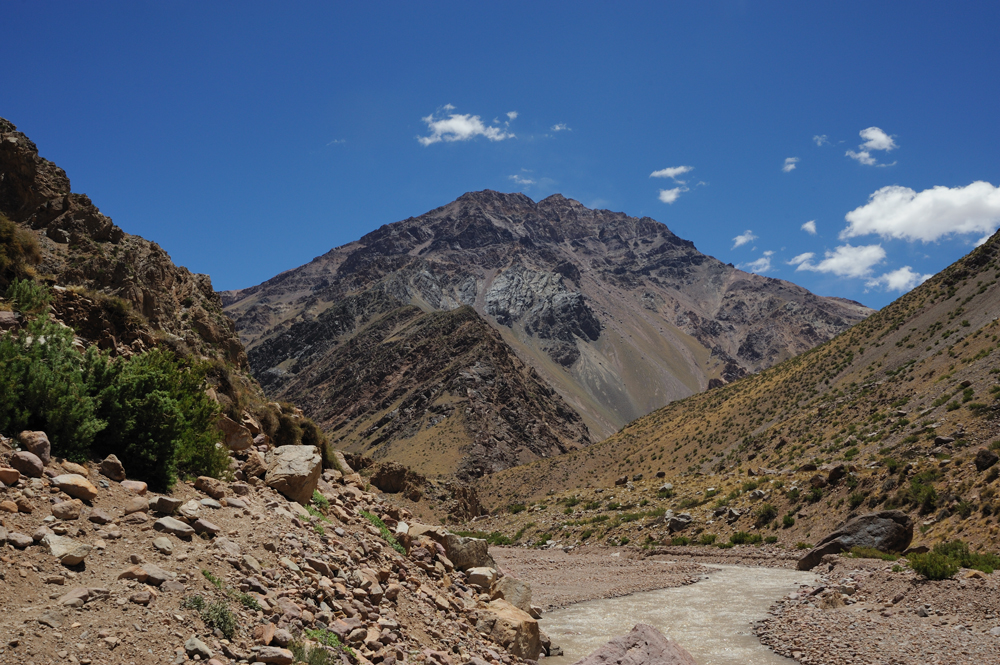
December 19
Actual start.
Couple words about logistic. Aconcagua is a very commercial mountain. Many companies are ready to take your money and guide you to the summit with the company of guides, porters, cooks, and other staff. Actually, most people climb Aconcagua with commercial companies. However, it is not required (like on Kilimanjaro), just pay the climbing fee to the park (Aconcagua is a national park) and go ahead. So, some people climb the mountain on their own, and we, of course, did it on our own too.
On the other hand, companies sell additional services for independent climbers, and some of them are very convenient. For example, luggage transportation to base camp by mules. A journey takes many days, conditions are very diverse, as a result, the luggage is heavy, and carrying it to the base camp in the backpacks is just wasting energy. Most independent climbers use this service.
Another convenient thing is relatively comfortable accommodation in the base camp, that includes a meal, garbage removal, and usage of common tents and toilets. In the base camp, people spend from one (very seldom) to five days depending on personal acclimatization and weather conditions. The companies have tent settlements with kitchens (where they cook normal food, not food from sublimates), huge common tents for daytime, and toilets. Toilets are a very important thing. It is prohibited to leave poops on the mountain, such amount of people would very quickly transform the mountain into one huge toilet. Ranges give you a special bag where you should collect all your waste. Carrying a poop bag for two weeks is not the most pleasant thing. The companies have toilets in the base camps, and waste from them are removed by helicopters, so the toilets are fee-based. Of course, everywhere higher than base camp, you should use a poop bag anyway, but the amount of time spent in the base camp brings sense to a paid toilet. The companies also take your garbage, so you don’t need to carry it all the time (garbage also has weight).
So, we bought mules and comfort from one company (comfort can be bought at the time of need because you never know exactly how many days you will spend in base camp).
Now start.
Yesterday evening we left our duffels with mules, so our backpacks were almost empty.
In the morning after the nice breakfast (omelette, fresh fruits and perfect coffee) we filled our bottles with fresh water, and the car took us to the trailhead. Puento del Incas, 2390 meters. The trailhead correlates with the entrance into the Rio de las Vacas valley, we will follow this river during the first two days.
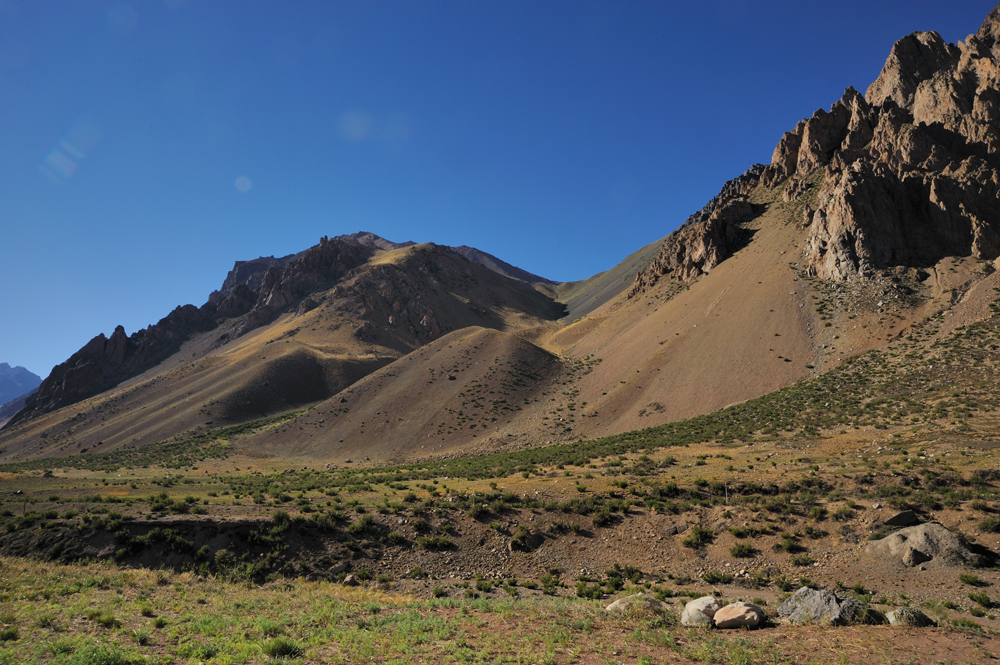
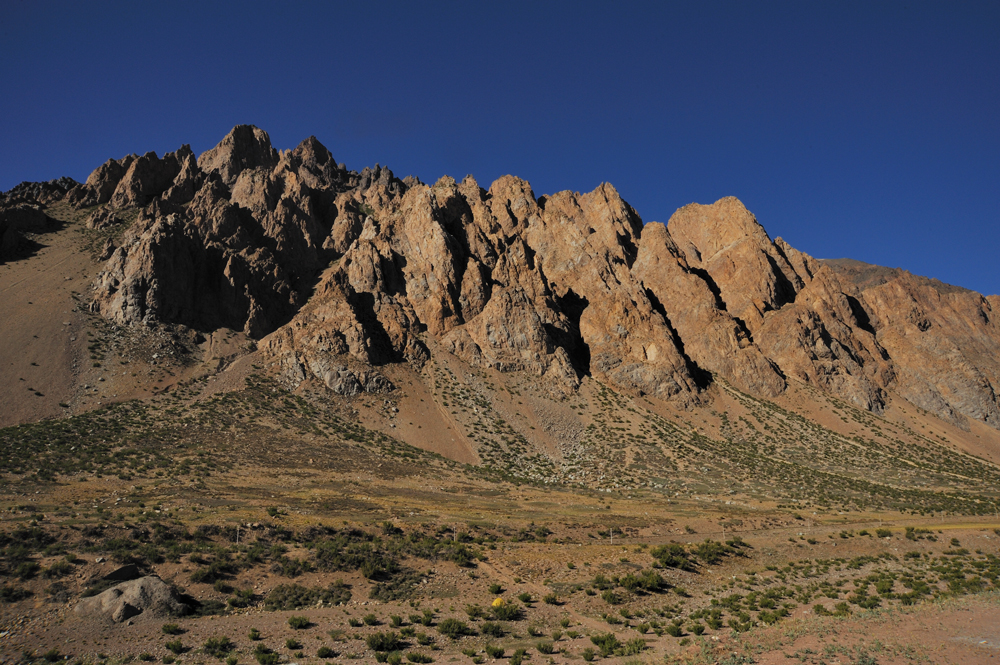
There is a ranger post on the trailhead. They check permits.
The permits for Aconcagua are very special things. In many other places where I had deals with permits, it was some paper that shows that I have rights to be here during some period of time. You should carry a permit with you and show it to authorized persons. In the Aconcagua park, everything is much more complicated. A permit has four parts. The first part for rangers at the park entrance. When you come in, they take this part. The second part is for control of your translocation and for medical control. There are rangers in every camp below base camps and in the base camps also. You should check your arriving in each camp on your way up, and every camp leaving in your way down. It is prohibited to stay anywhere except special camps on the elevation of base camps and below except emergency cases. Above the base camps, you can stay anywhere. There are several camps above the base camps, but they don’t have any facilities, and nobody controls your movement between them.
There are medics in both base camps. Sometimes they even come to upper camps, but their permanent places in the base camps. Before going higher than base camp, everybody must be checked by medics. If you don’t have their permission, rangers will turn you down. The park doesn’t need more corpses, they have enough of them anyway. At the checkup, medics can give you permission or require immediate evacuation or give the recommendation to stay in a base camp one or two more days and repeat checkup.
The third part of the permit is for garbage and human waste. At the park entrance, rangers give you a garbage bag with your personal number. When you leave the park, you should return it with garbage (or show the stamp of the company that have a deal with your garbage). If you lost your bag or bring it empty, you will pay a surcharge. The same situation is with human waste but in the base camp.
The last part of the permit is for the exit. You can stay in the park for 45 days, after this they will look for you.
Thus, at 10 am the ranger took the first parts of our permits, gave us the garbage bag, and sent us away. We were going to the first camp Puento del Lenas. The distance is 15 kilometres, elevation gain is 510 metres (from 2390 to 2900).
The Andes around us.

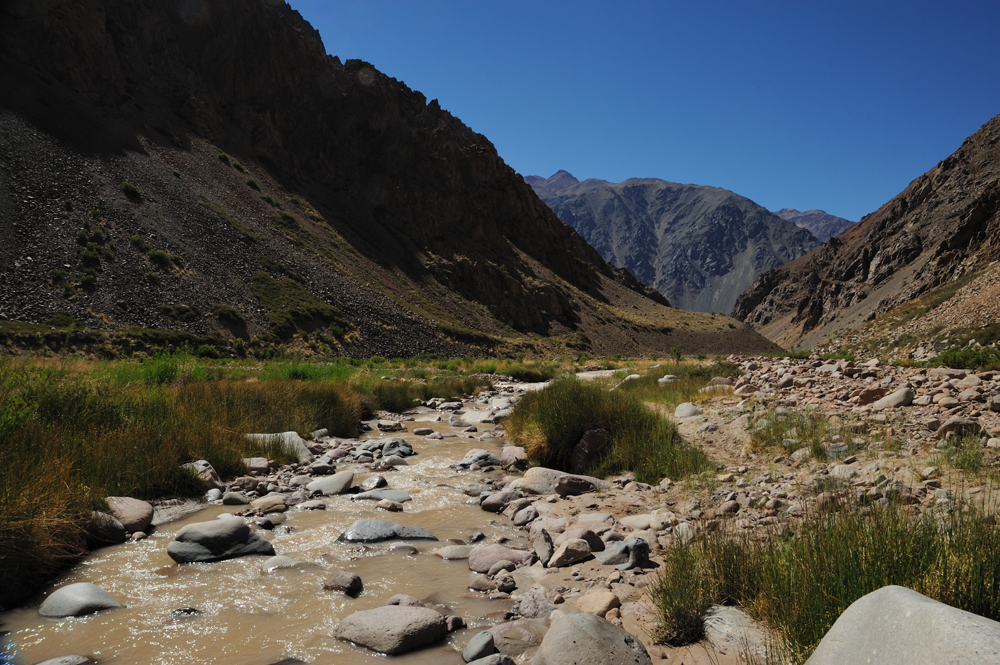
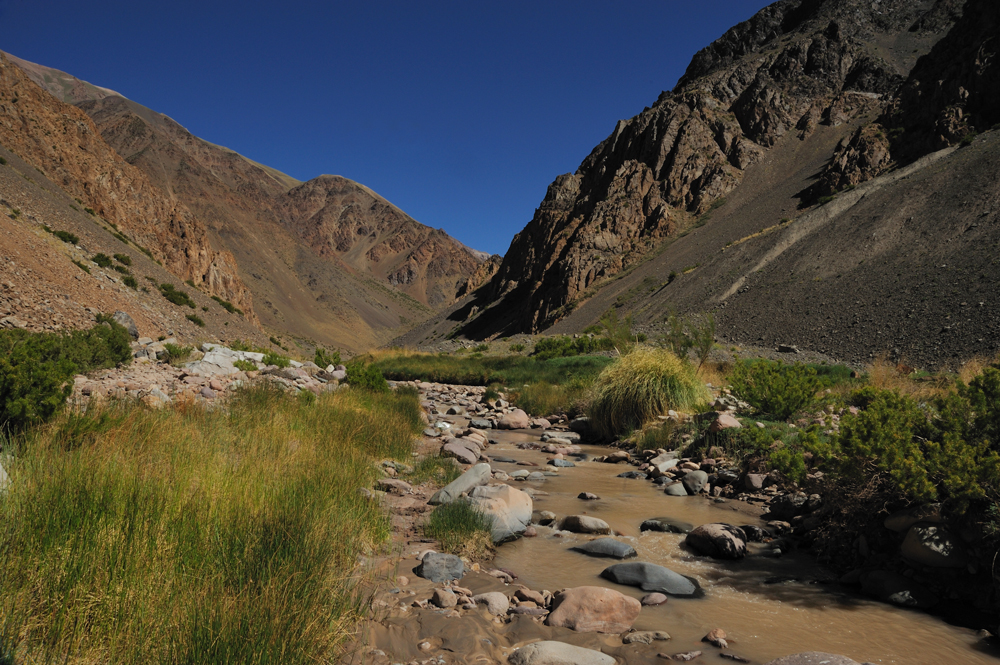
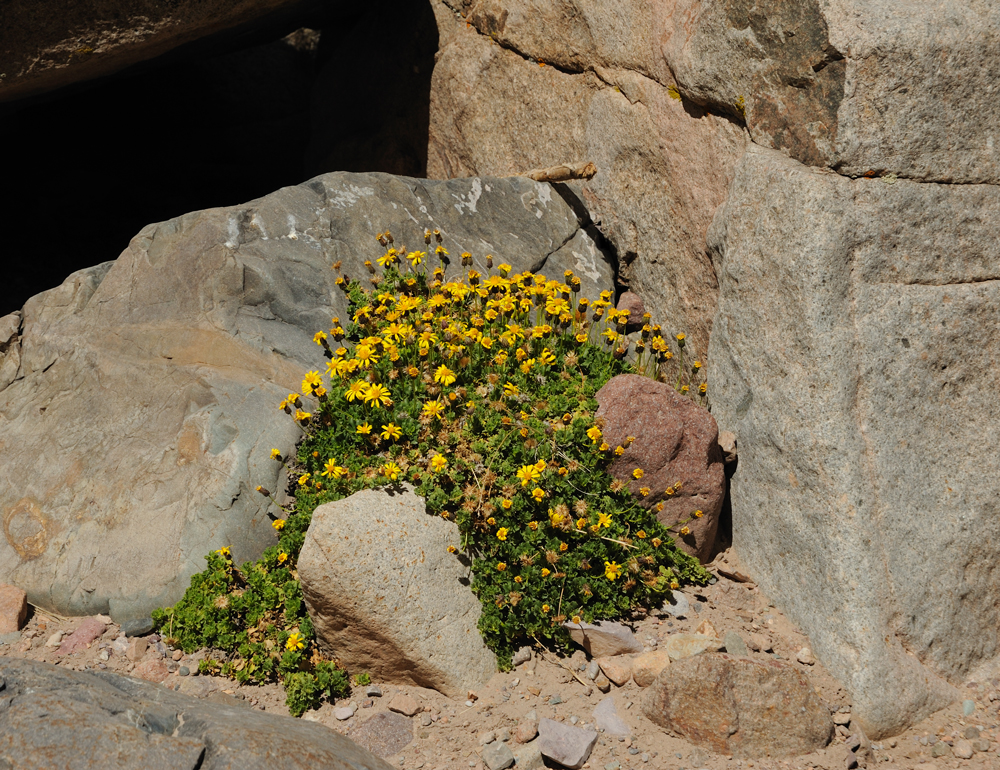
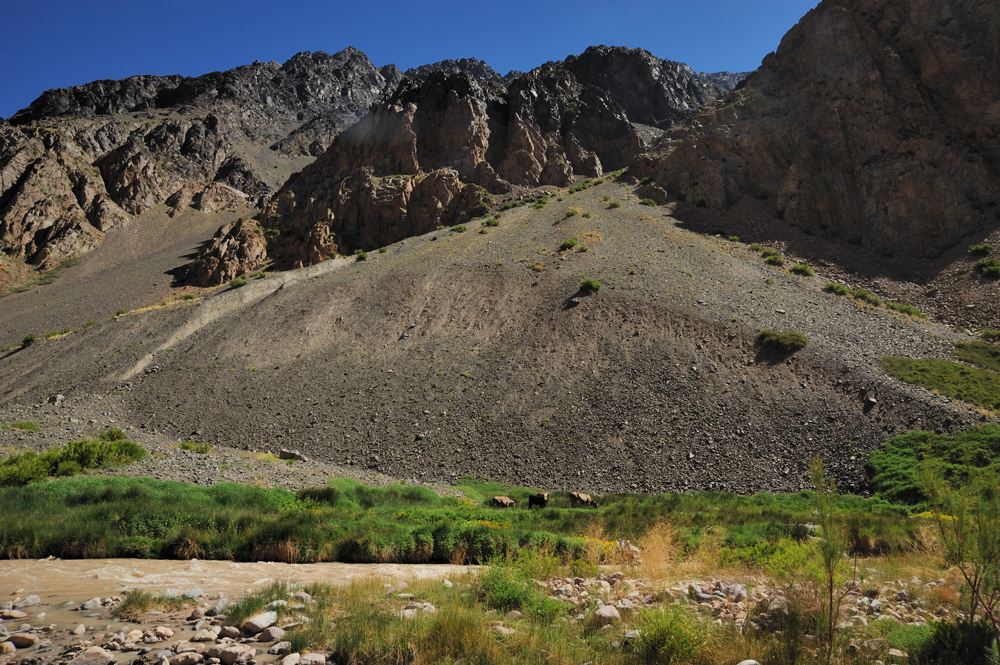
This bright-green grass growth around a small water channel.
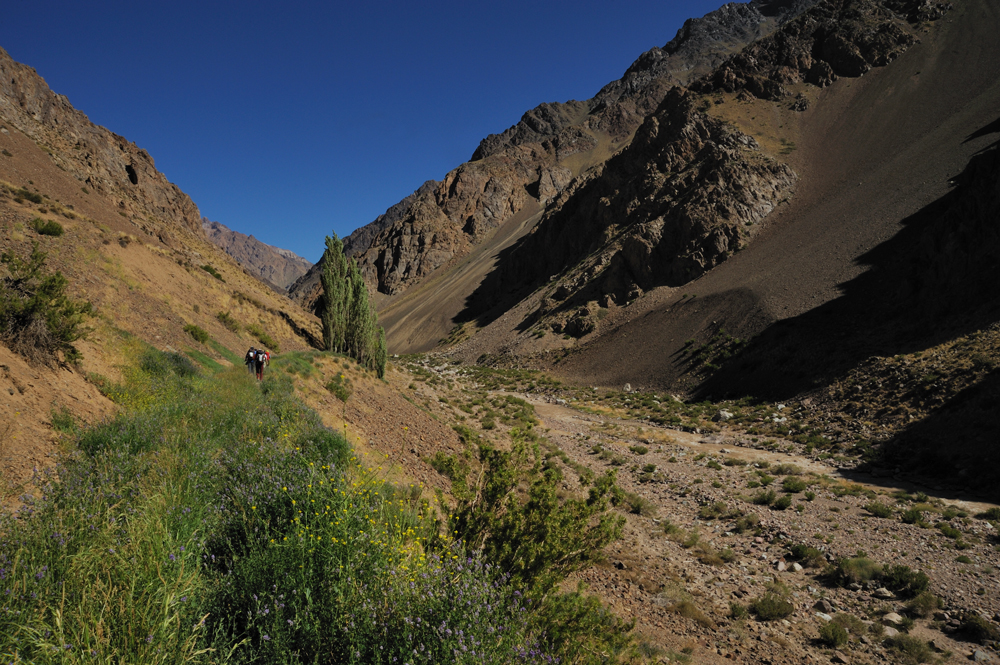
This little plant of Solanaceous family inkles that here is the origin place of potato and tomato.
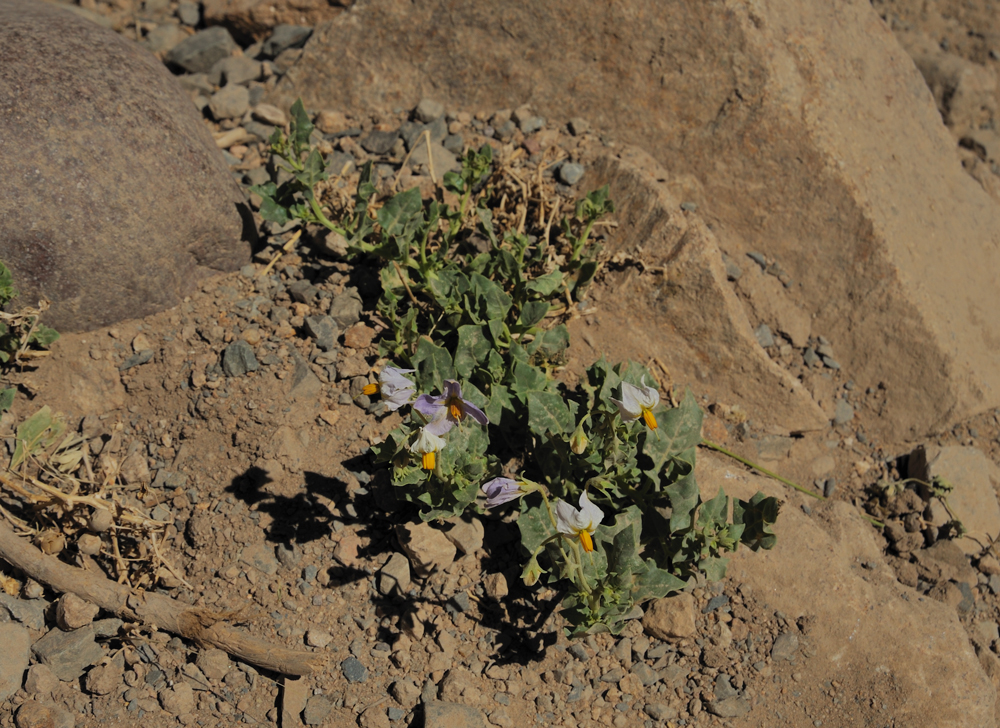
The river valley is very wide and spacious.
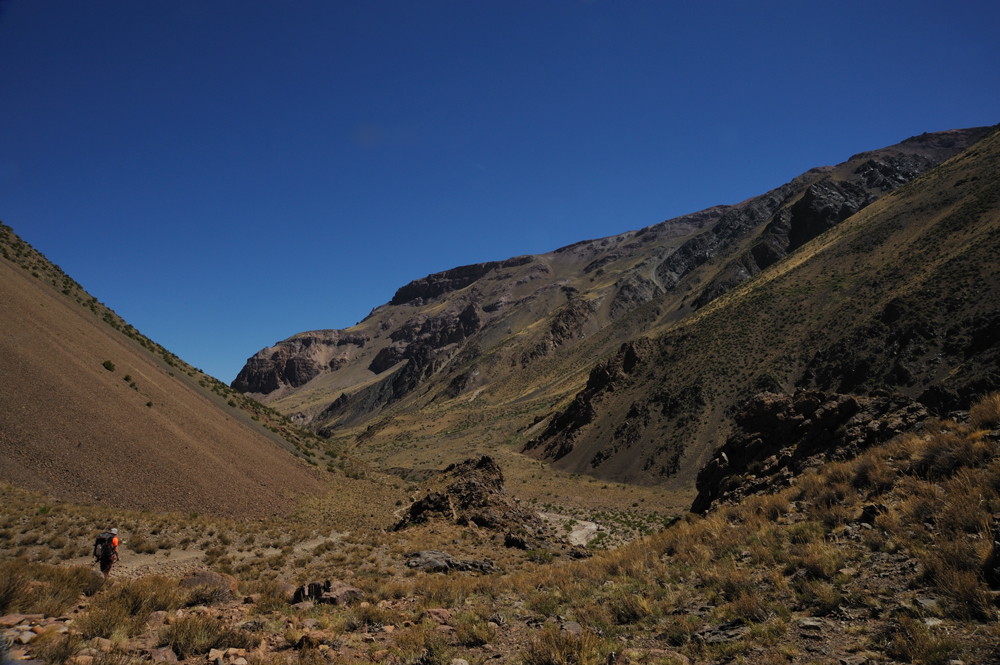
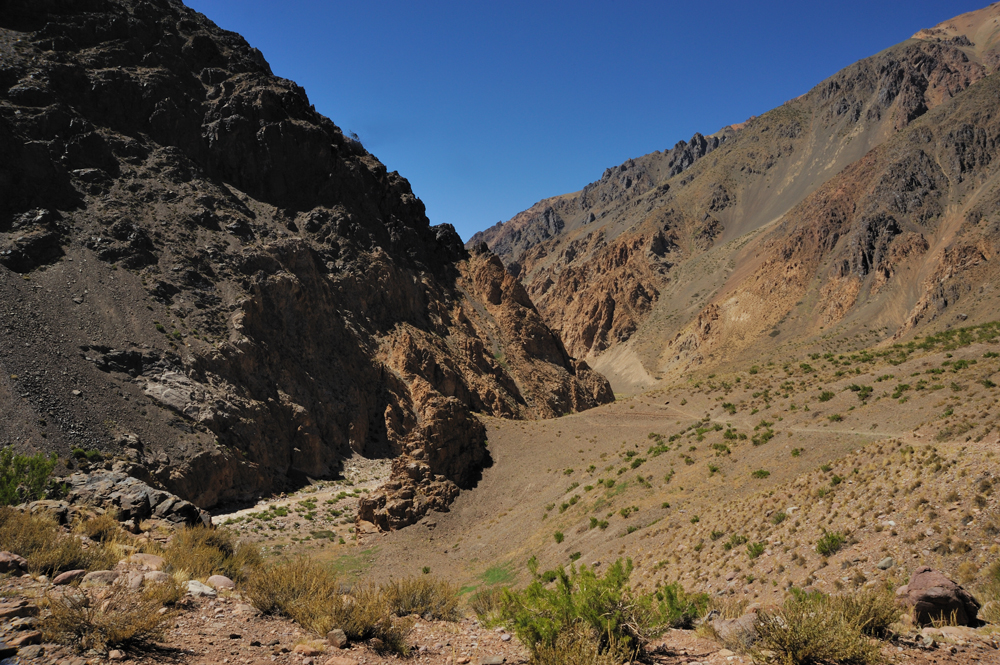
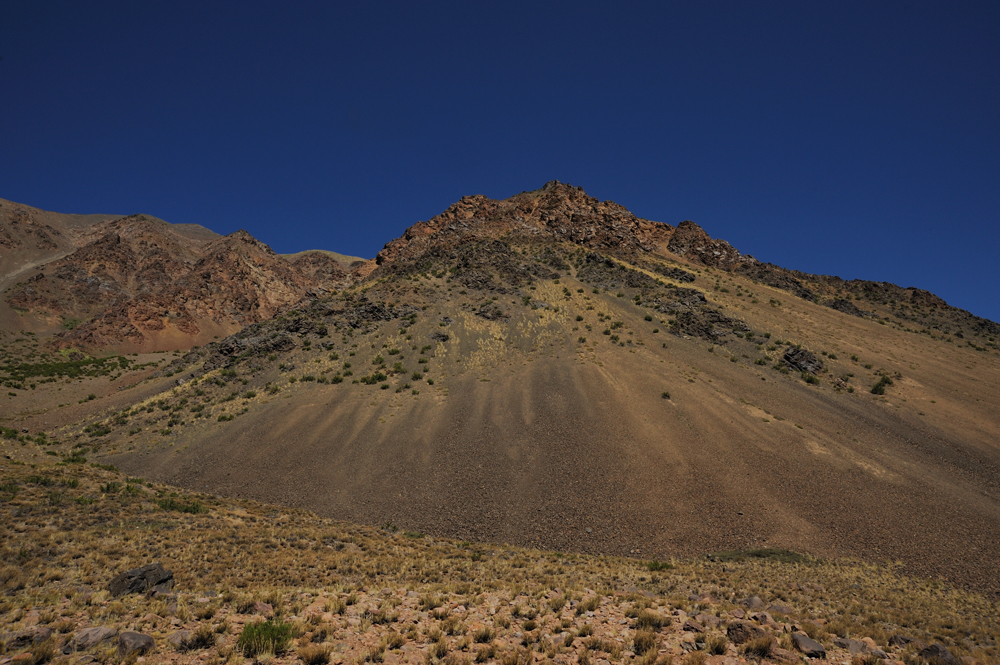
It is not an empty desert, there are many animals around.
Hooded siskin aka Spinus magellanica.
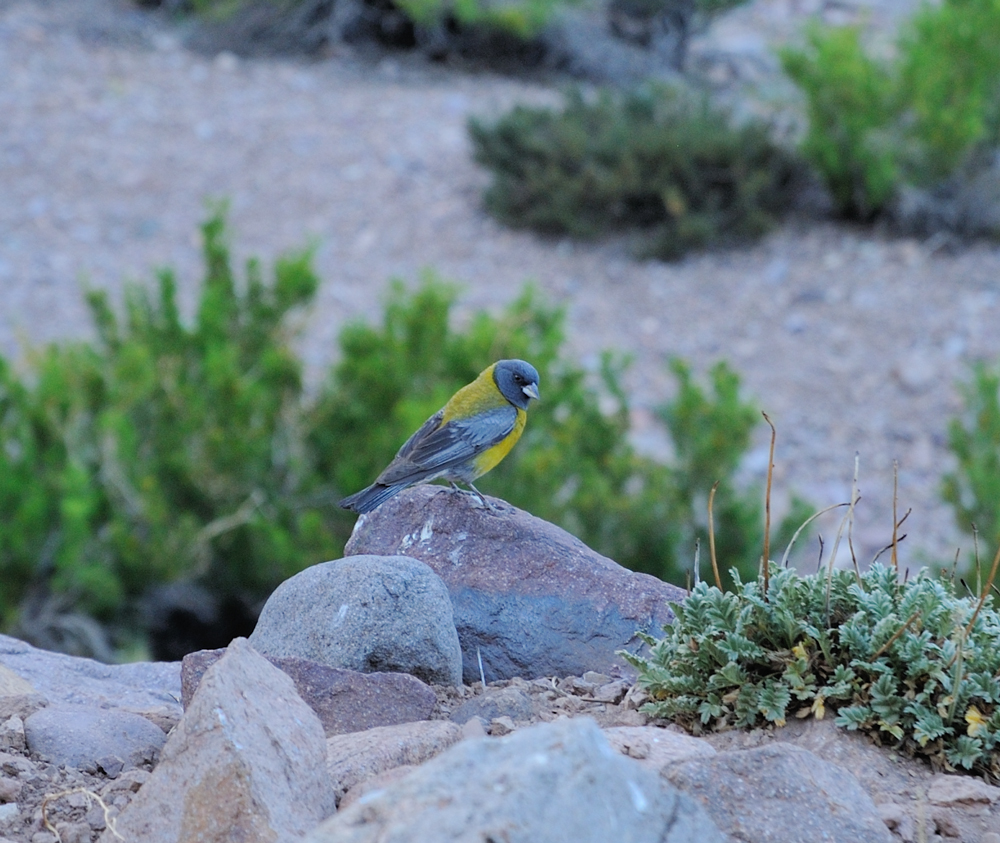
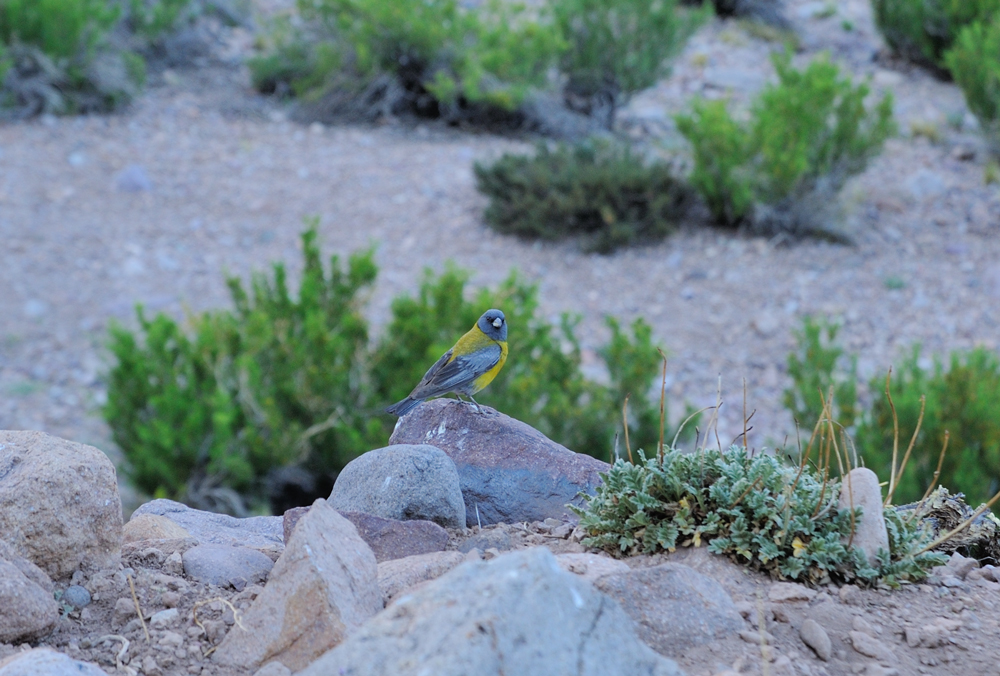
Lizards. Lagarto Cola de Piche ака Phymaturus roigorum. Ande’s endemics.
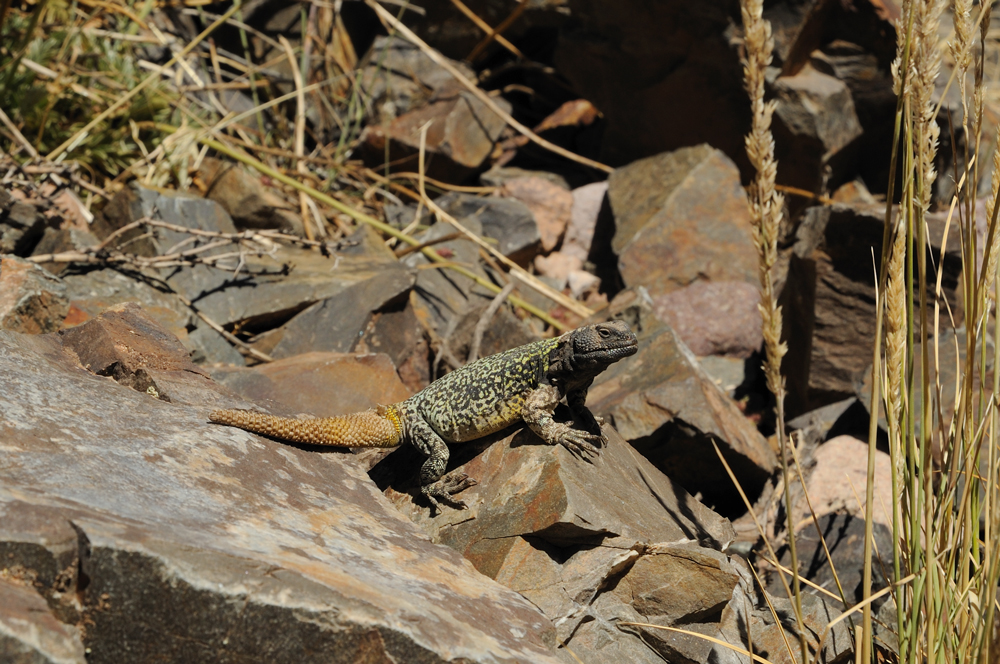
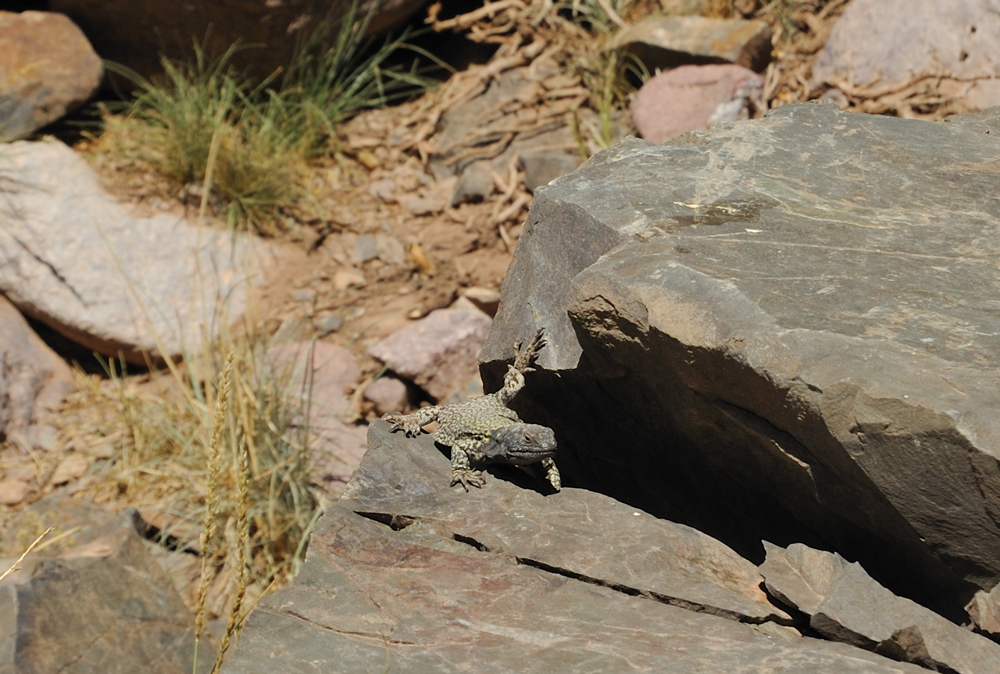
There are plenty of them, but they are very shy.
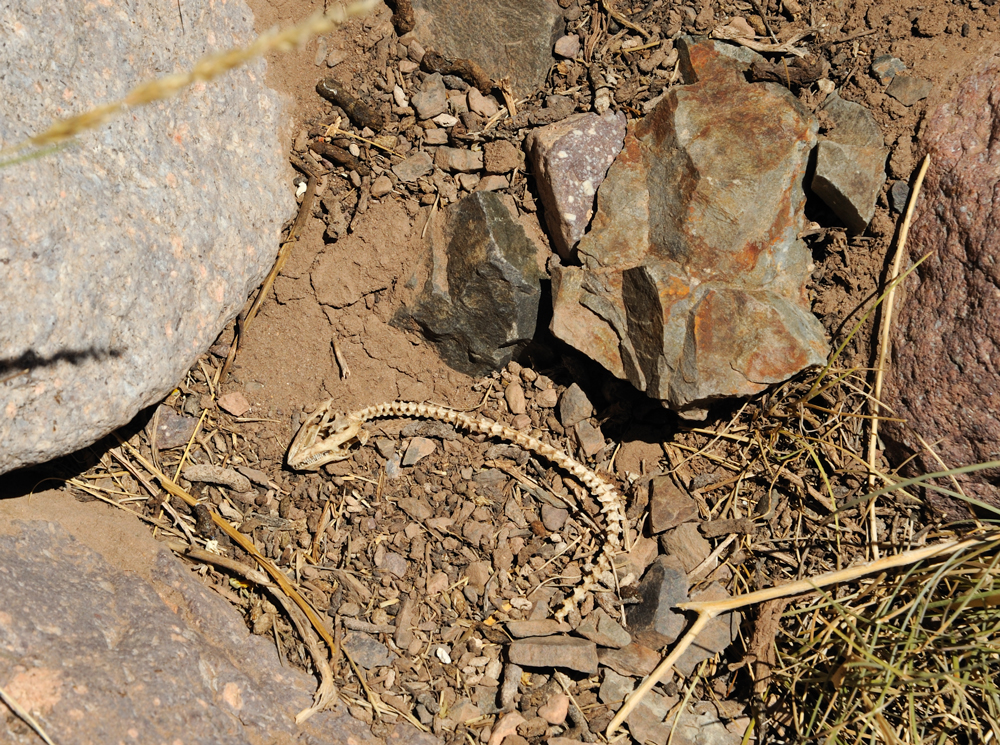
Life in the desert is short.
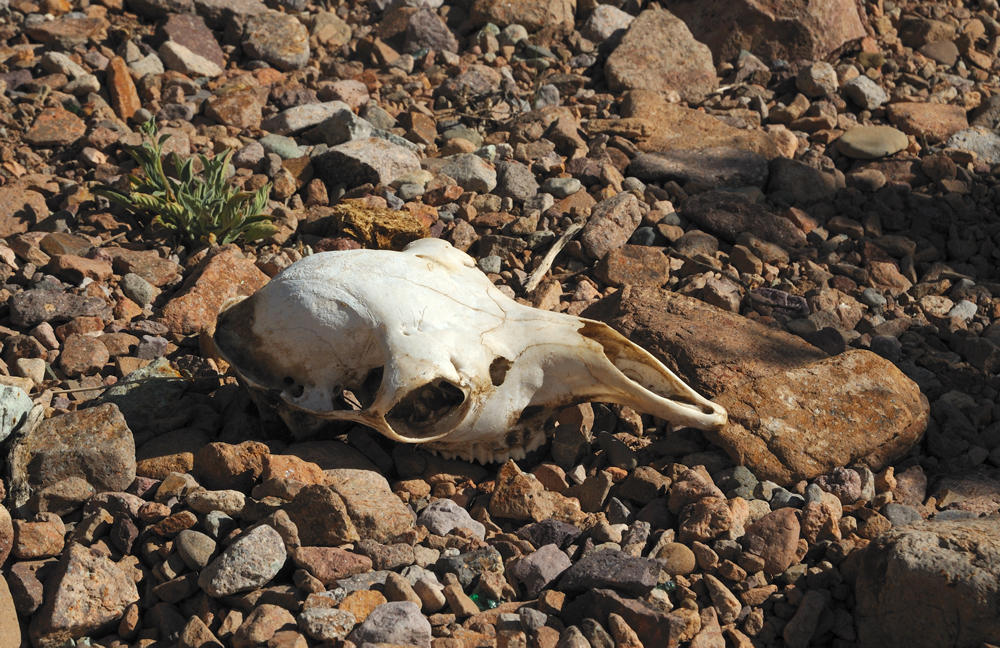
The river comes from the glacier, it is very cold and muddy.
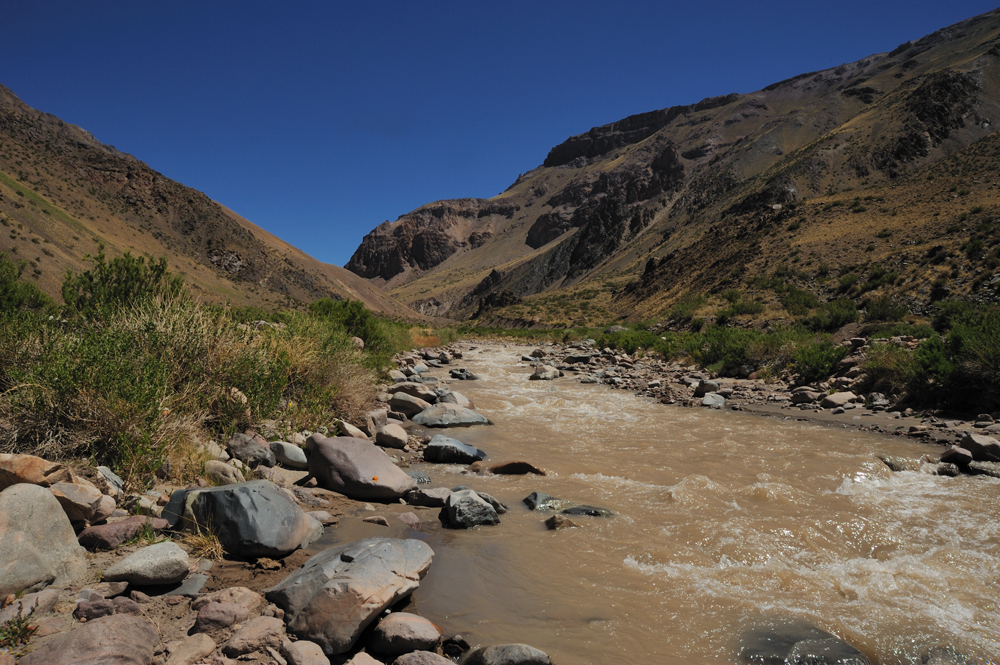
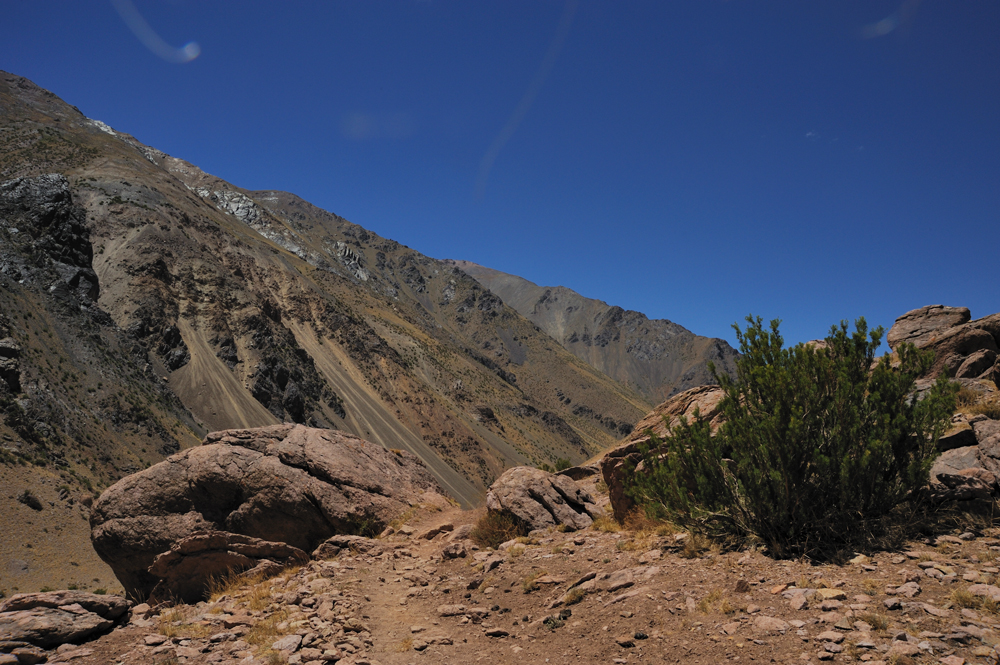
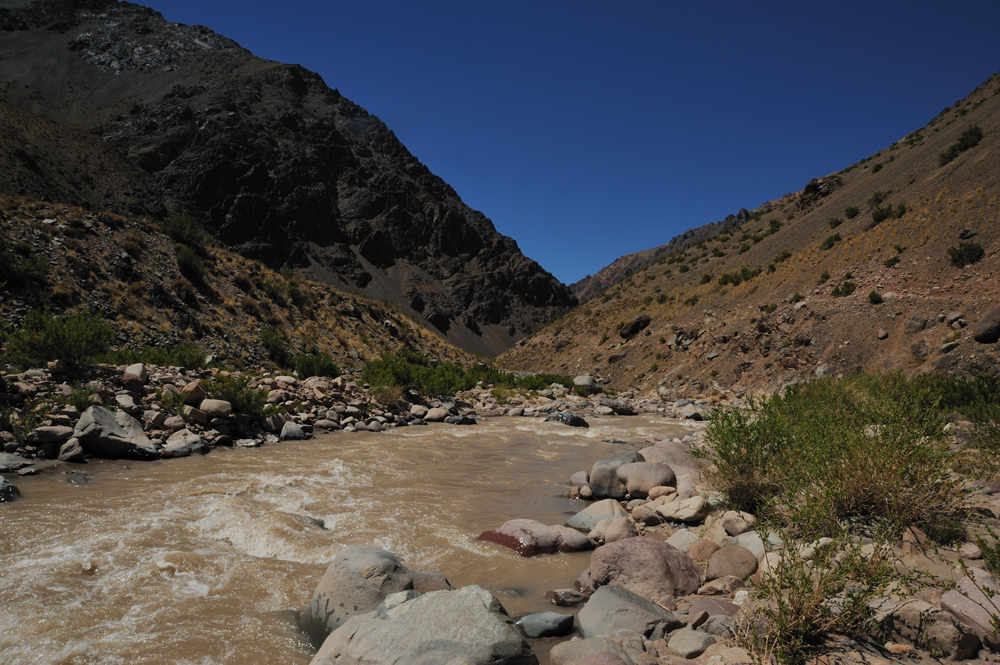
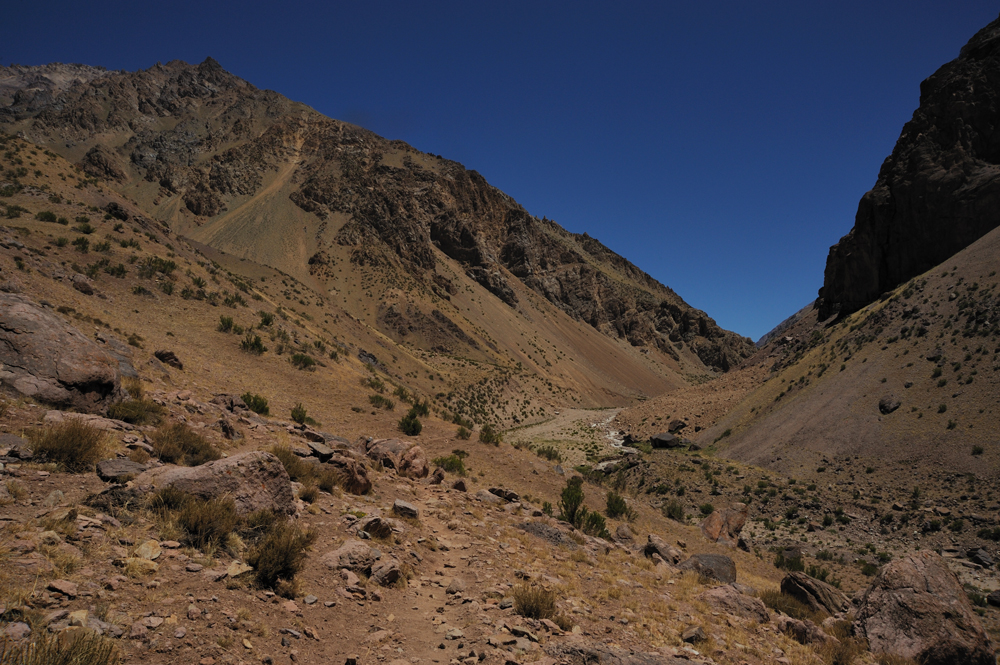
These are definitely not wild animals.
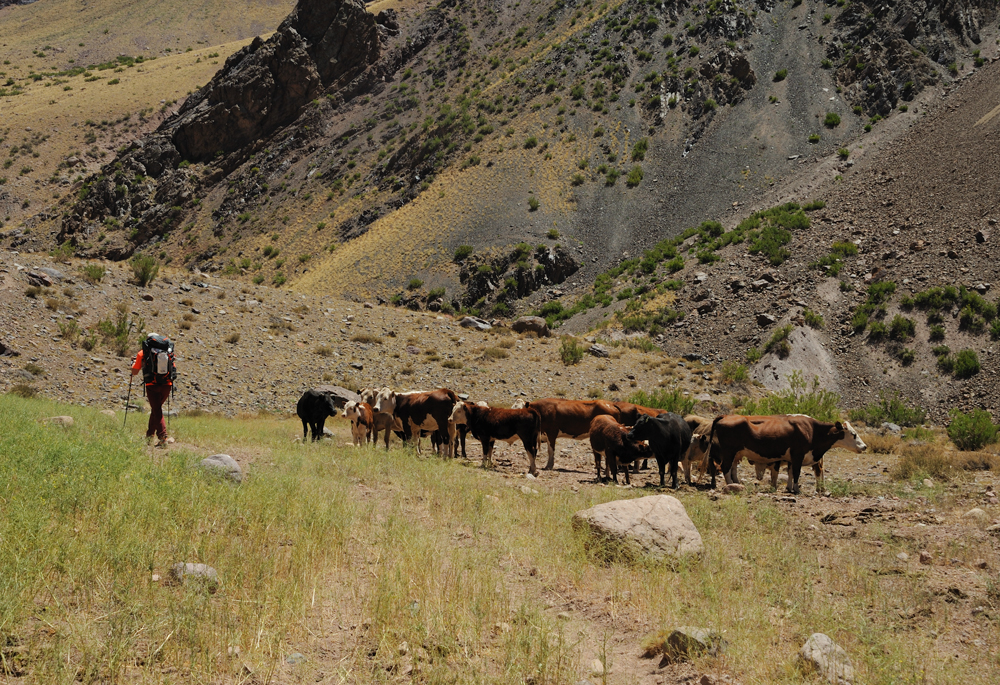
Here is not the best place for pasture, but cattle looks not bad.
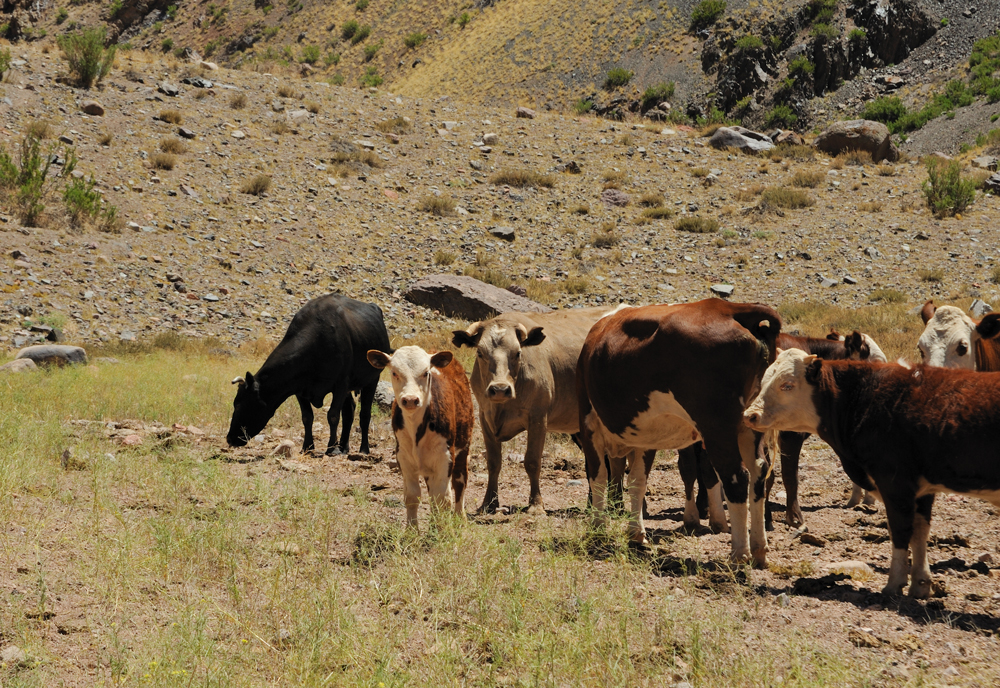
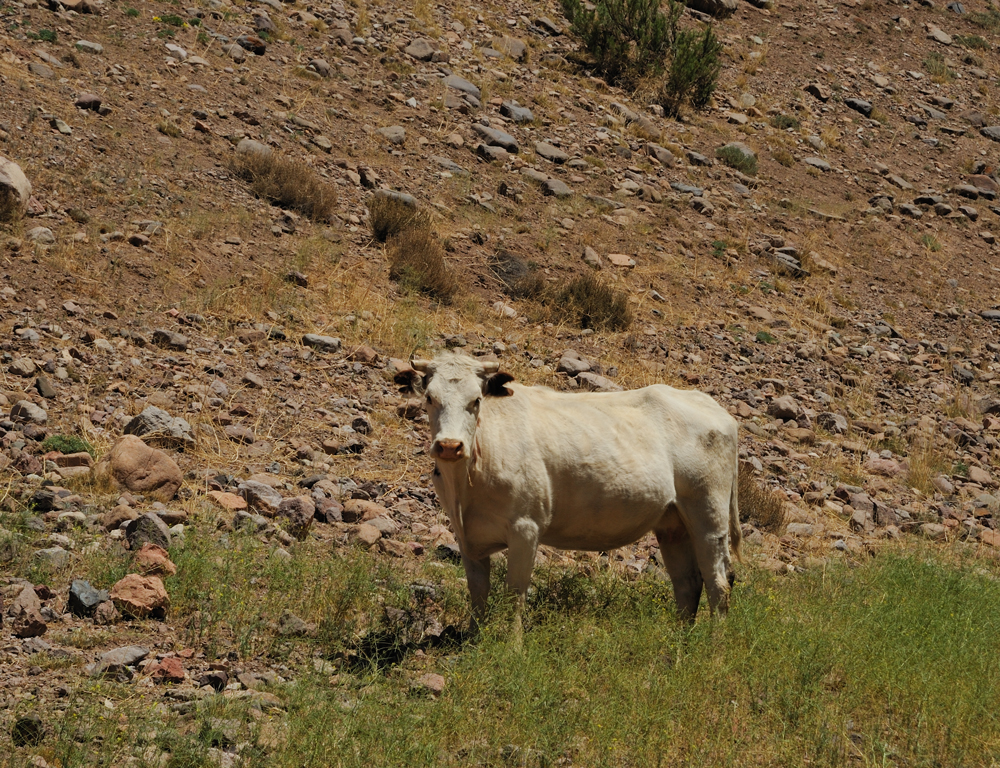
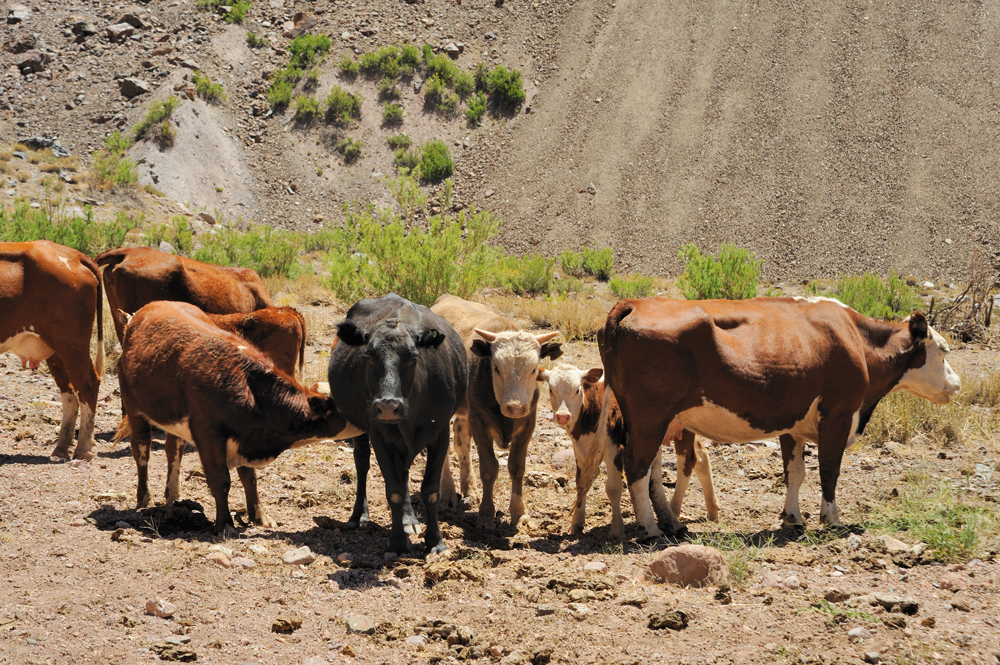
We continued our way along the river. It was very hot, about +35C. And it was impossible to undress till short and top, the sun is tropical, and the altitude is about 3 km, so sunburns would be heavy. Fortunately, the light wind gave some relief.
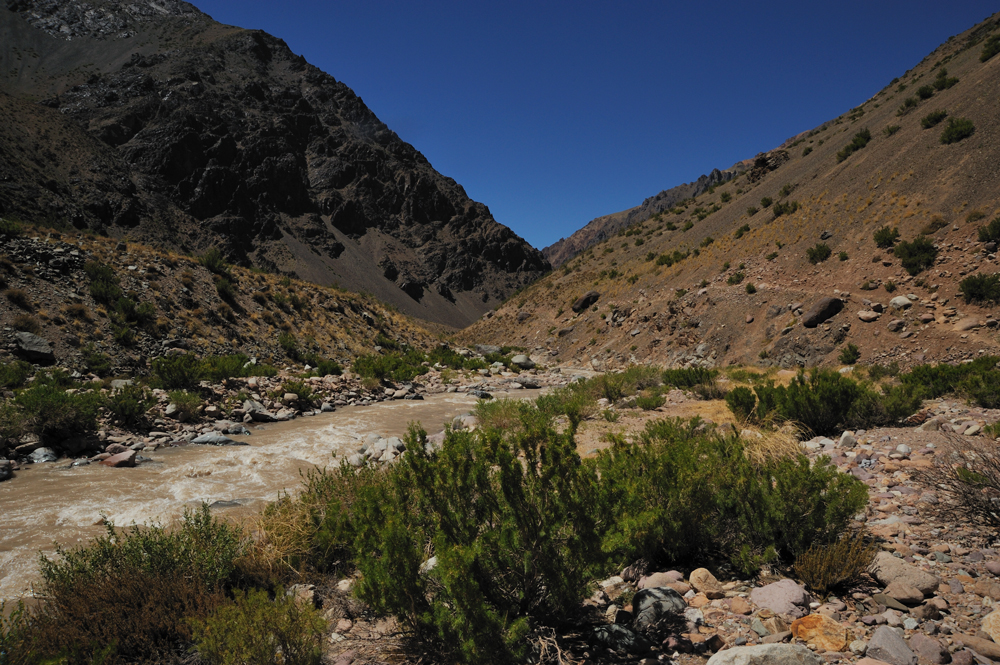
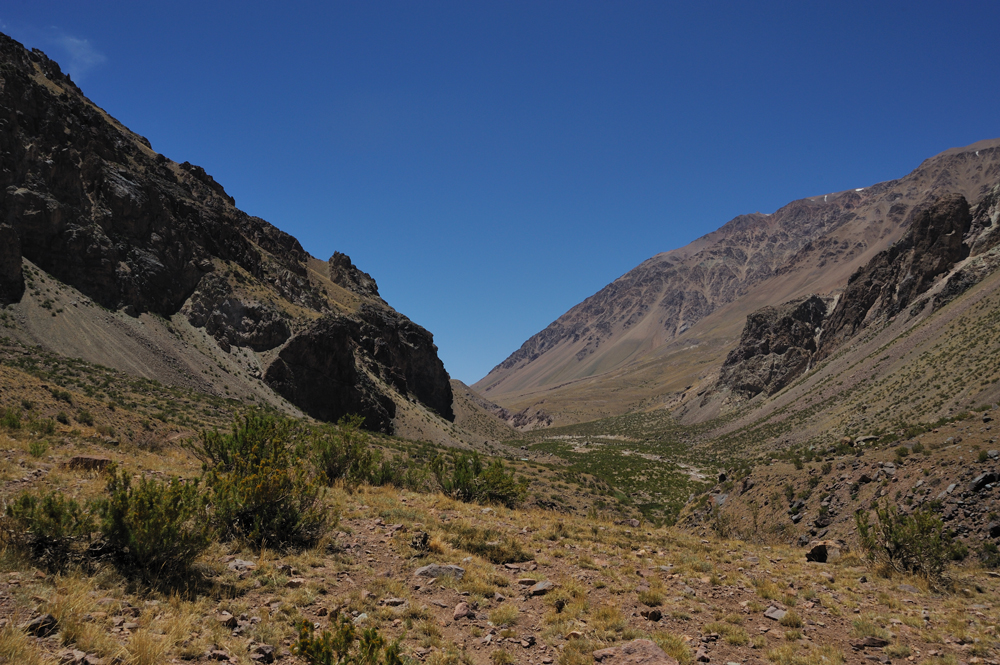
Mules
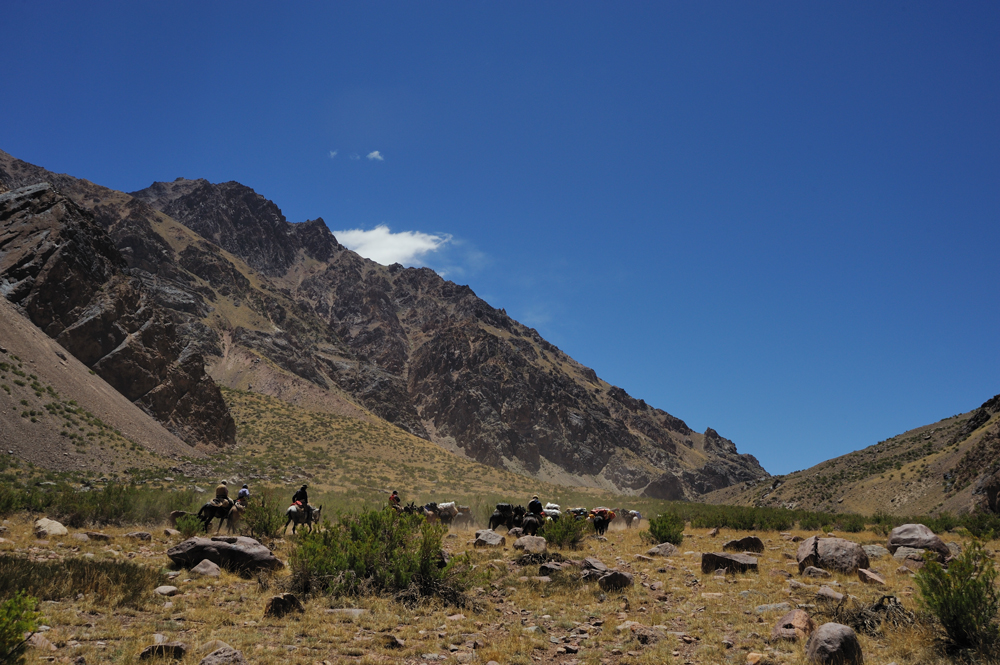
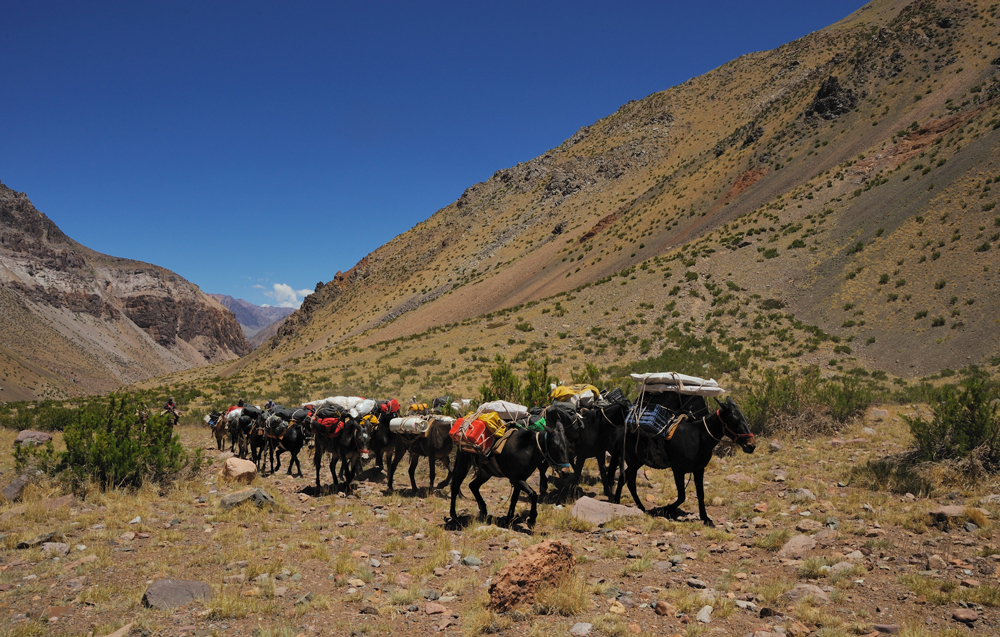
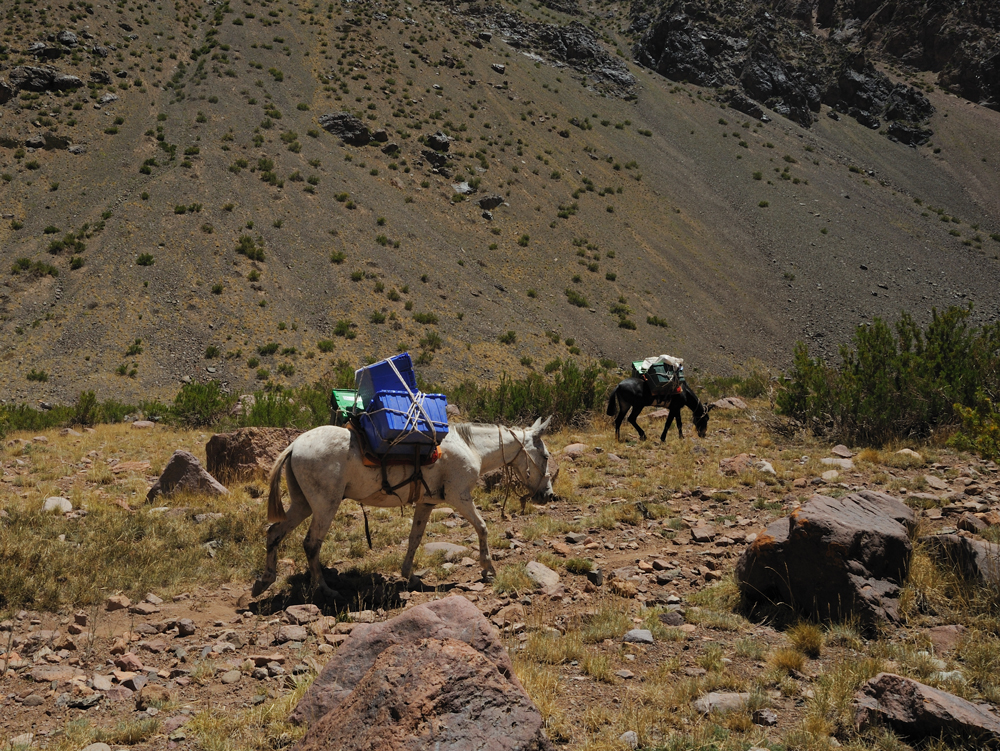
More blooming plants
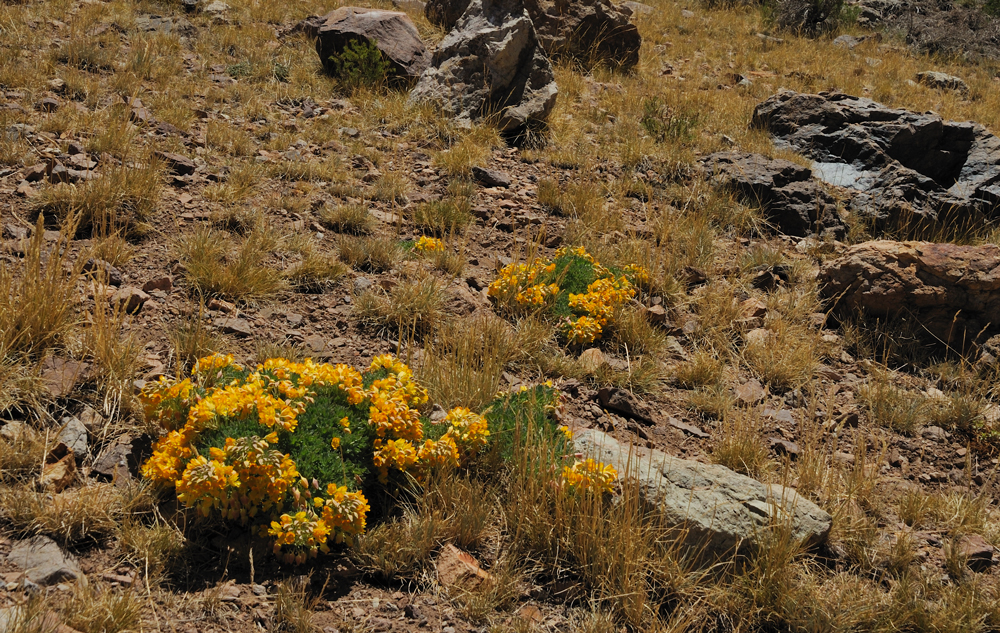
Cactus
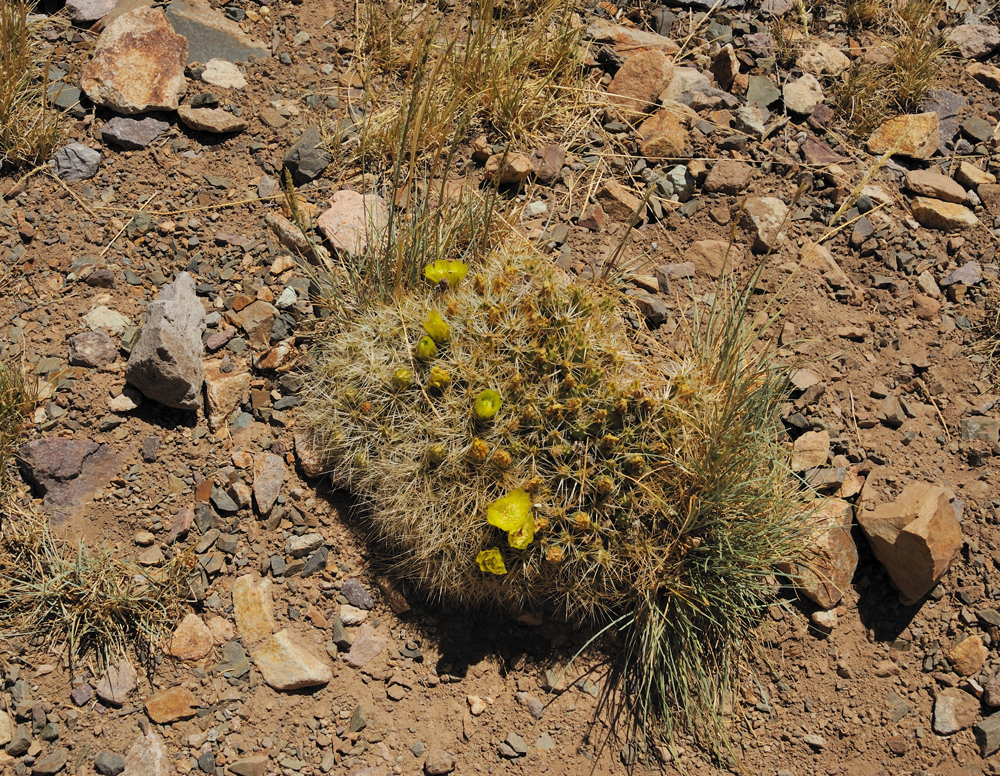
Erythranthe lutea aka monkeyflower
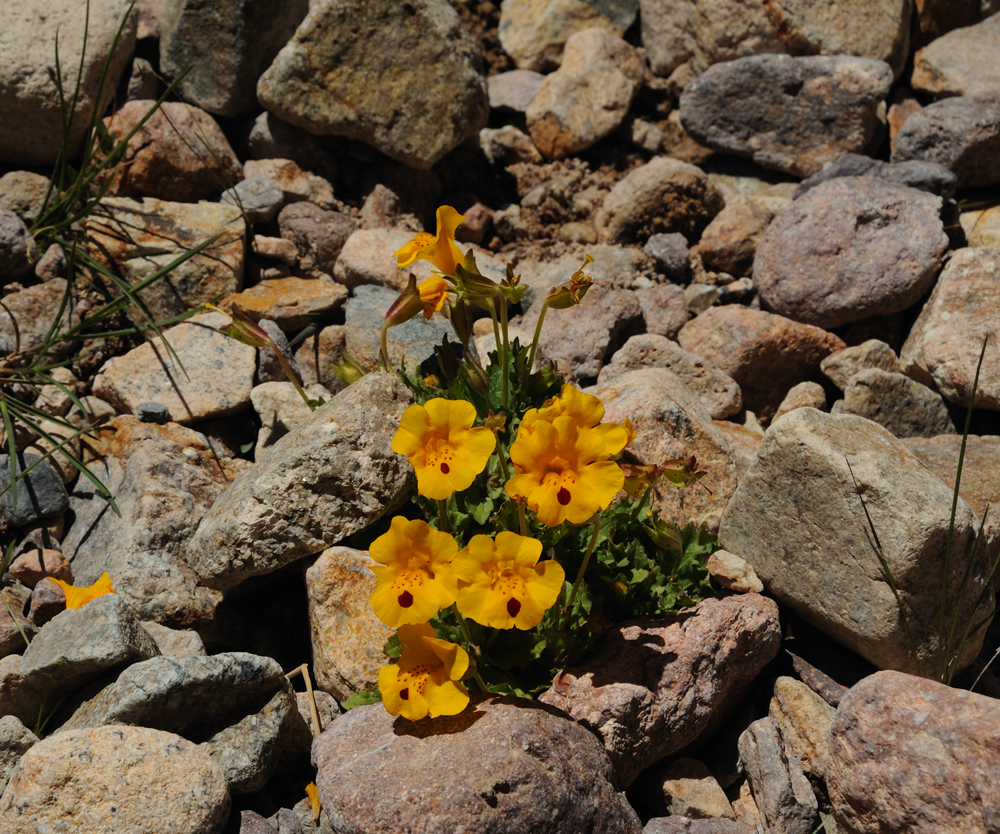
Last turn
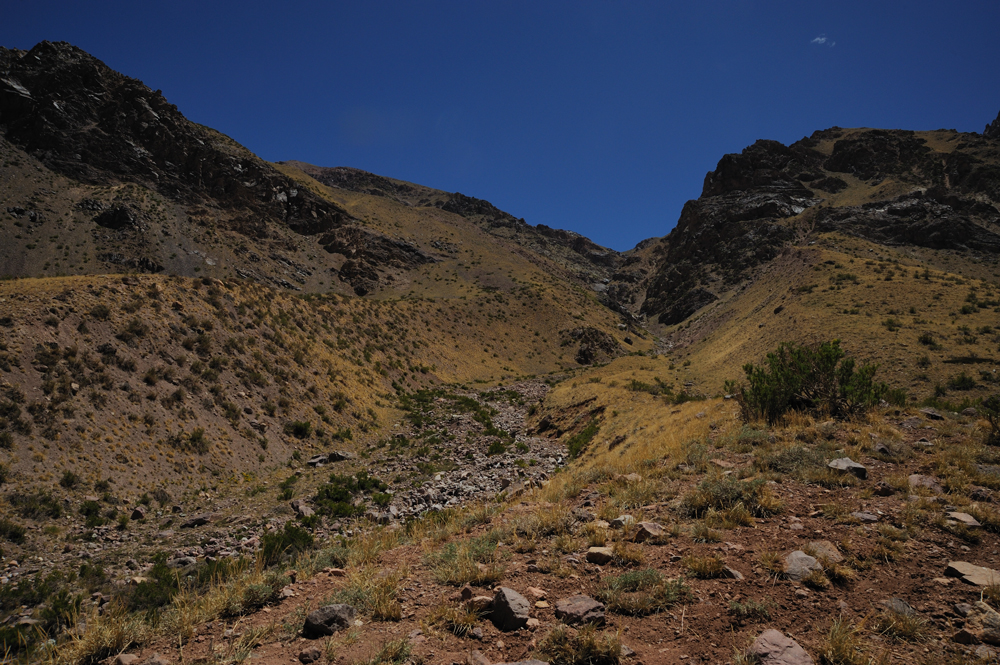
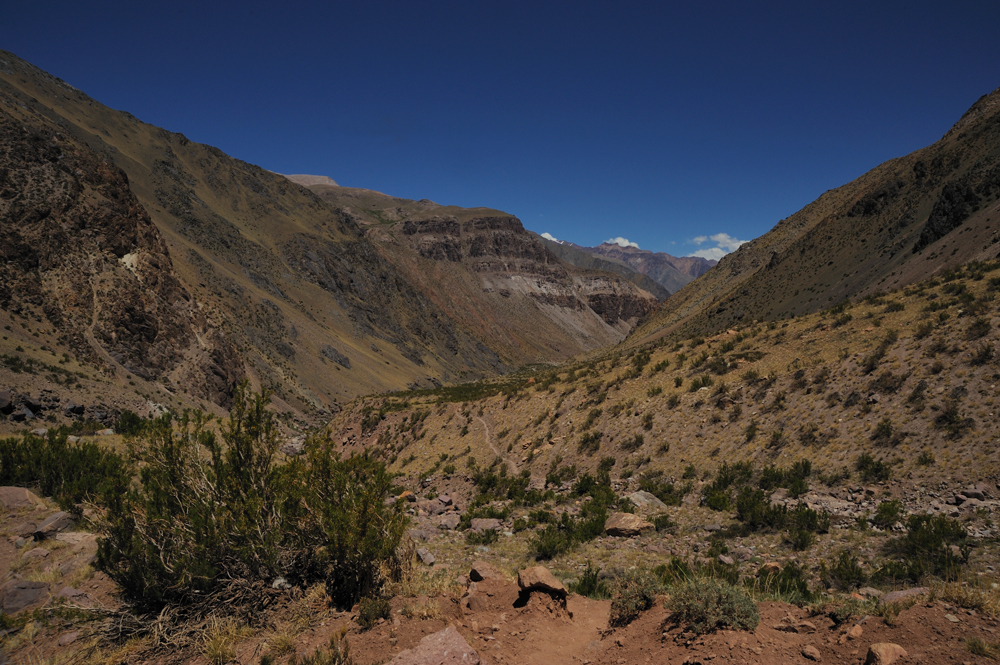
After five hours on the road, we could see Puento del Lenas.
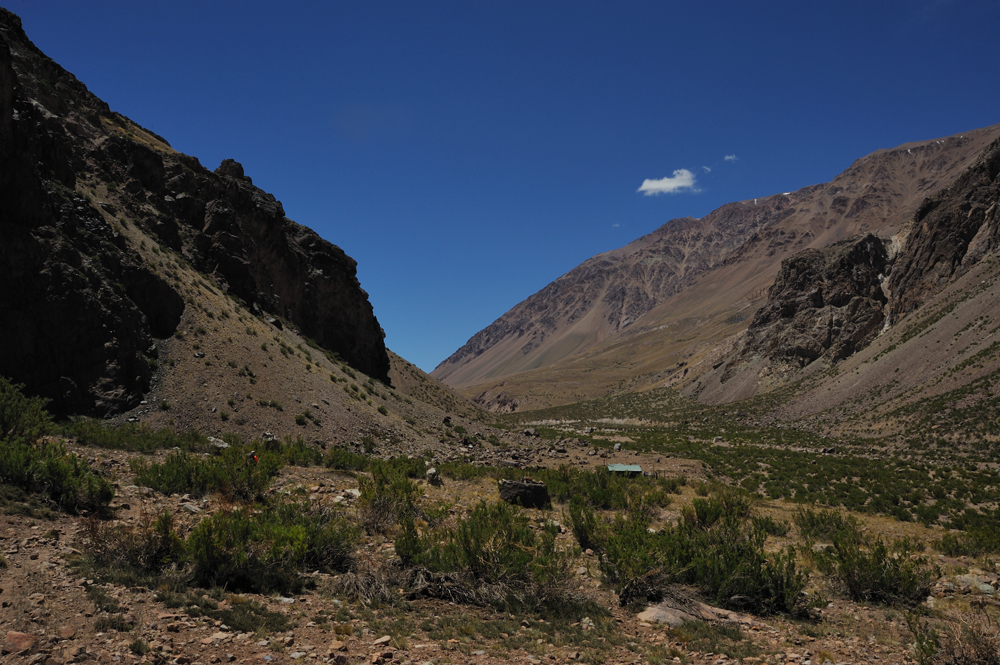
Ranger’s cabin
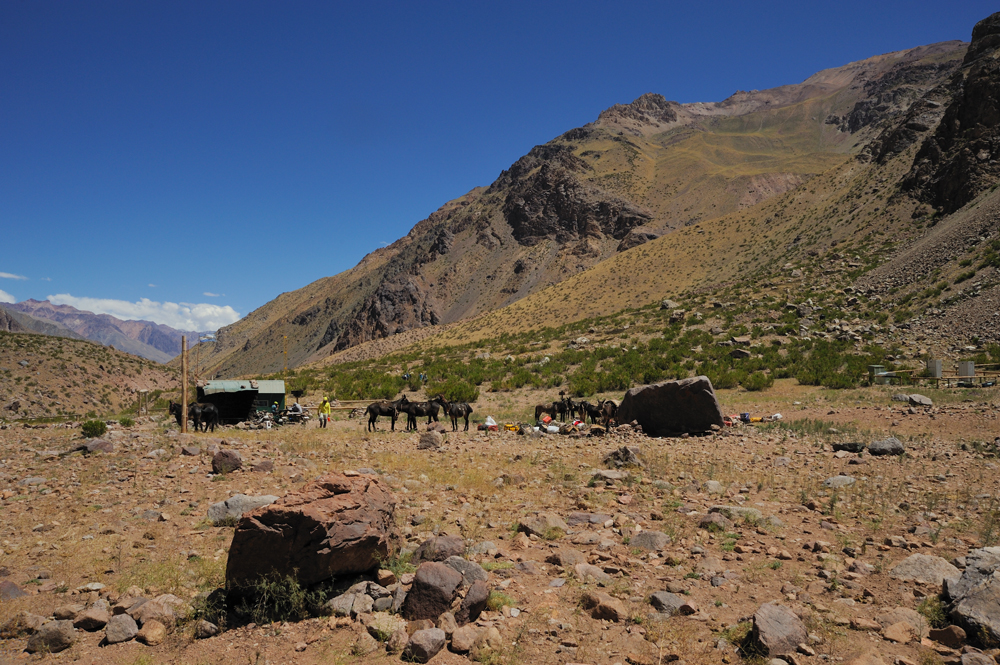
While we waited for mules with our luggage, I swam in the river. It is muddy but better than nothing.
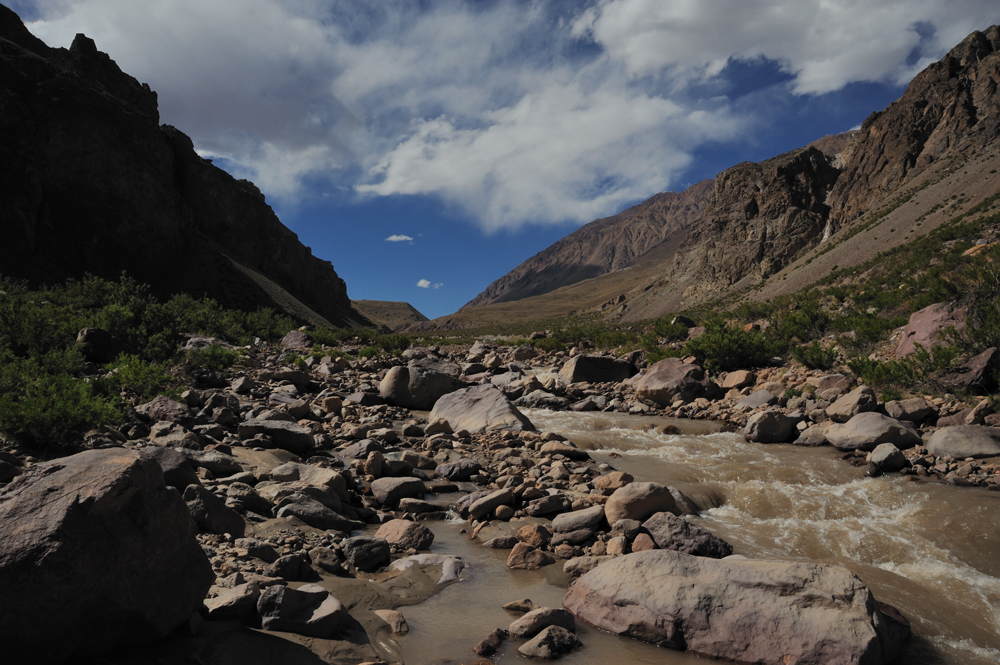
Zorro (the Spanish name for fox)
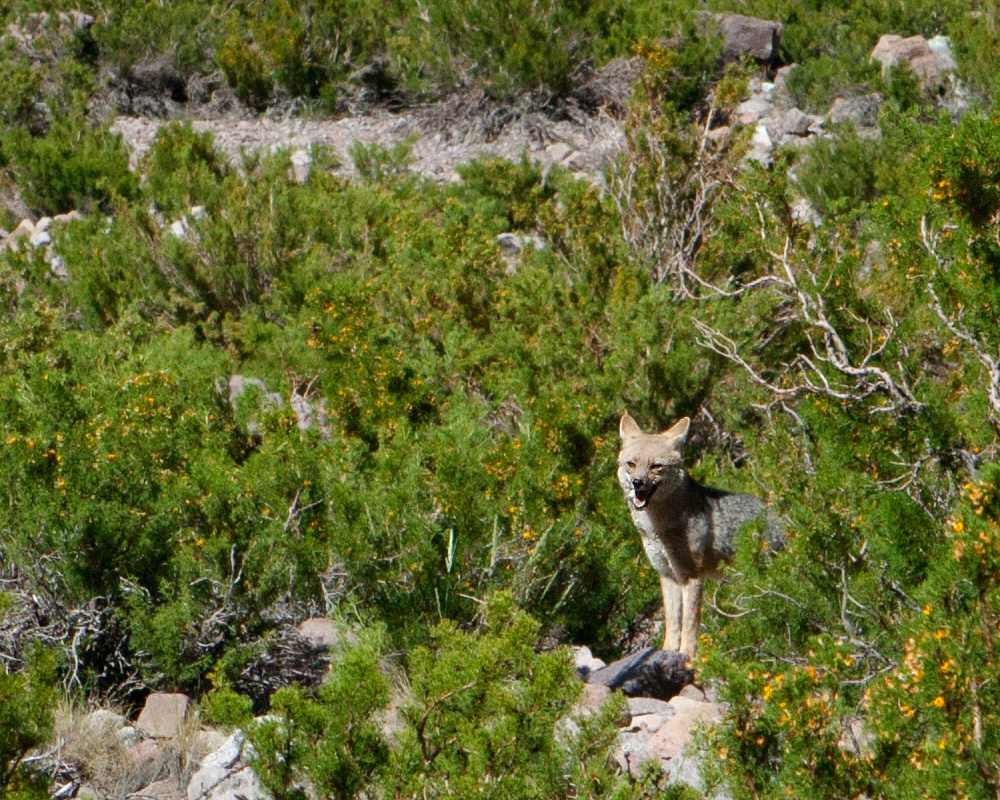
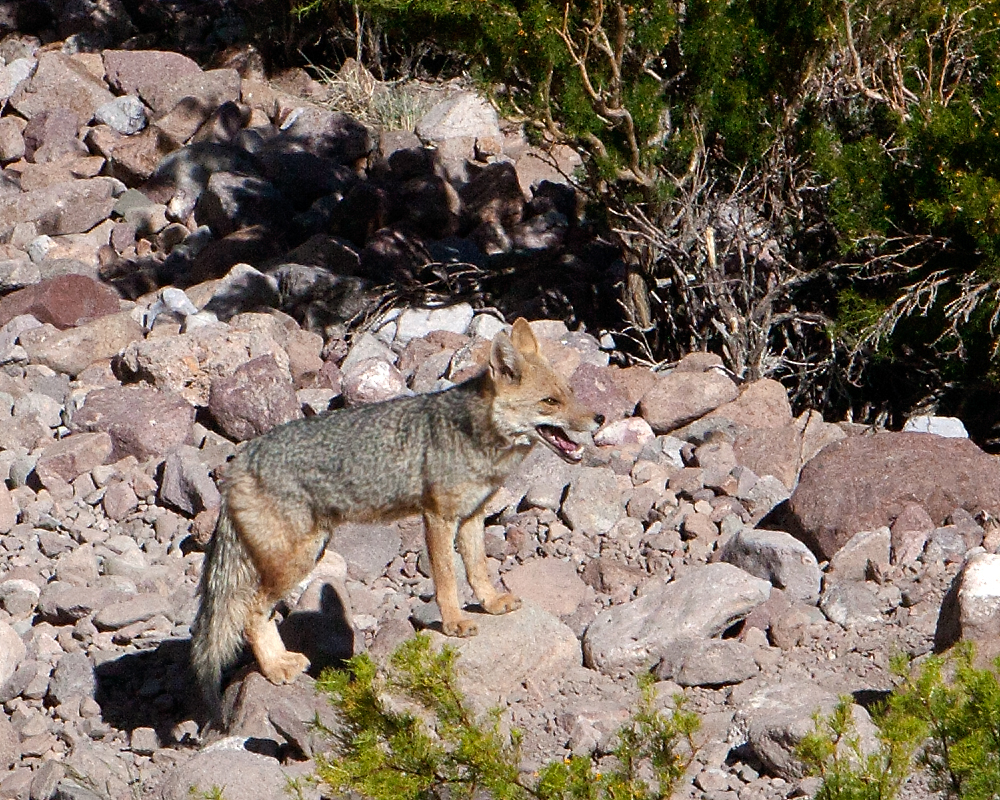
Zorro was attracted by the smell of roasted meat. Well, I was attracted also. Such a smell!
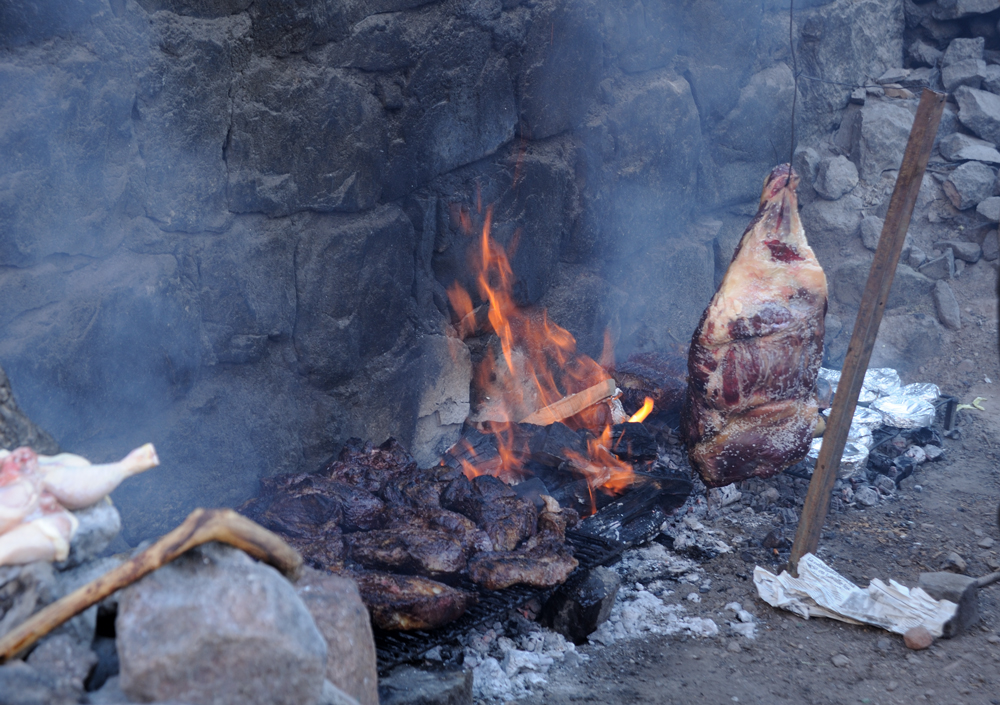
Neither the Zorro, no I got anything from this party. It was the dinner of arriero (mule drivers). Regular dinner for arriero is about 1.5-2 kg of roasted mead with Malbec. Well, everybody should have some pleasure in life.
The meal worths special mention. Together with mules, we got a meal plan for the days below the base camp from the same company. They just give you some food (fresh, not freeze-dry), that you should cook yourself. (Of course, you also can hire a cook, but it cost significant additional money (cook should travel with you), and for me, it doesn’t have any sense.) What food it would be you don’t know ahead. We thought it would be some preserves, spaghetti and possibly fruits and cheese. At the first camp, we got 4 (!) boxes (for 2 persons), one of them was cooler. The boxes contained a lot of ham, cheese, juices, couple kilos of the fresh meat, fruit preserves, fresh fruits (including melon), fresh ravioli, fresh cream, plenty of bakery stuff and many other things. it was impossible for us to consume all this stuff for a week, not for 2.5 days that we had. I realized that my idea to lose some weight at this travel was a miracle.
We were lazy to cook, so we just eat some ham, fresh salads and preserved pears, and drank some juice (juice was really good, we took it for day hikes instead of water and it worked perfectly).
It became cold after sunset, so we went to sleeping bags.